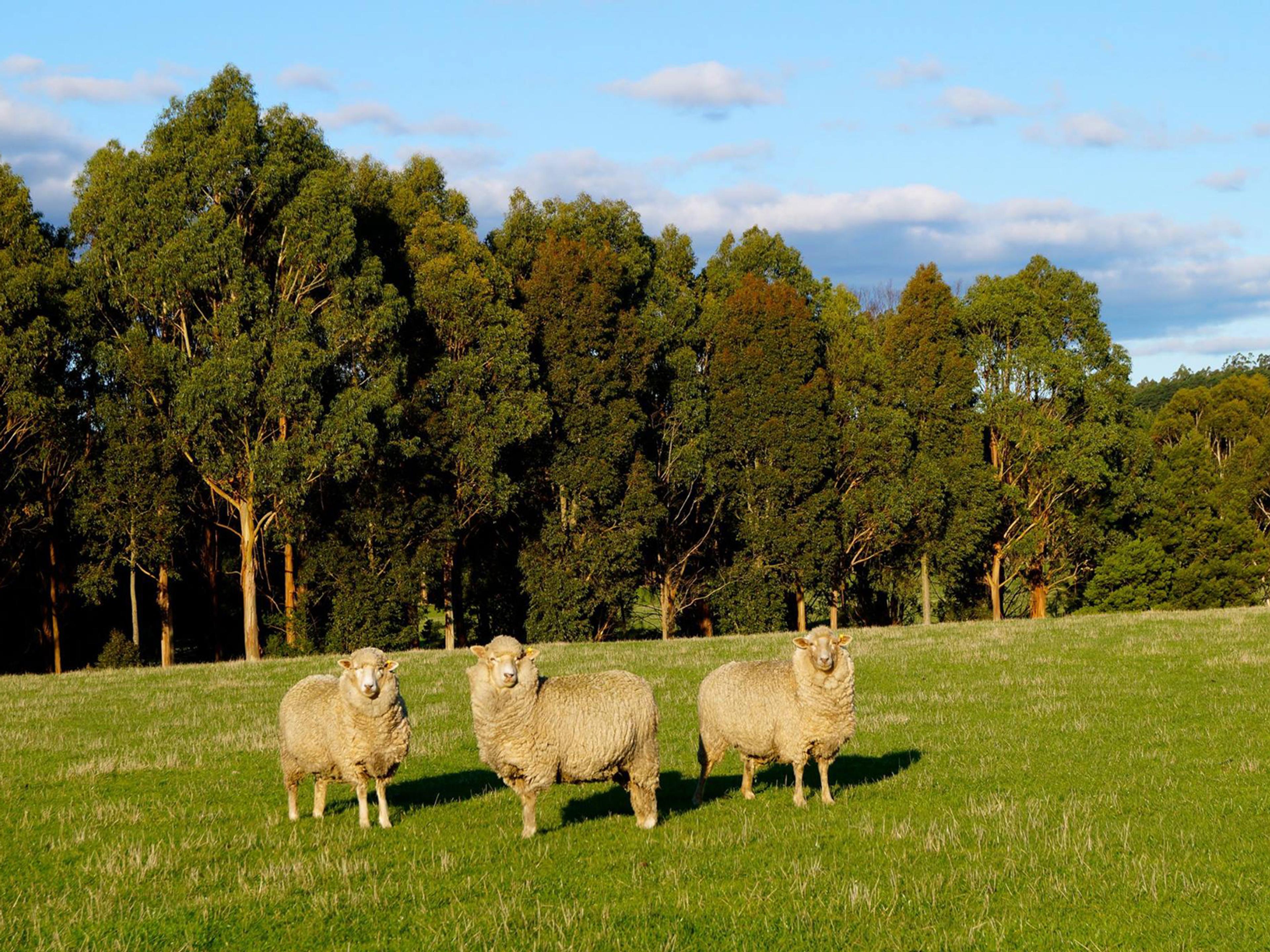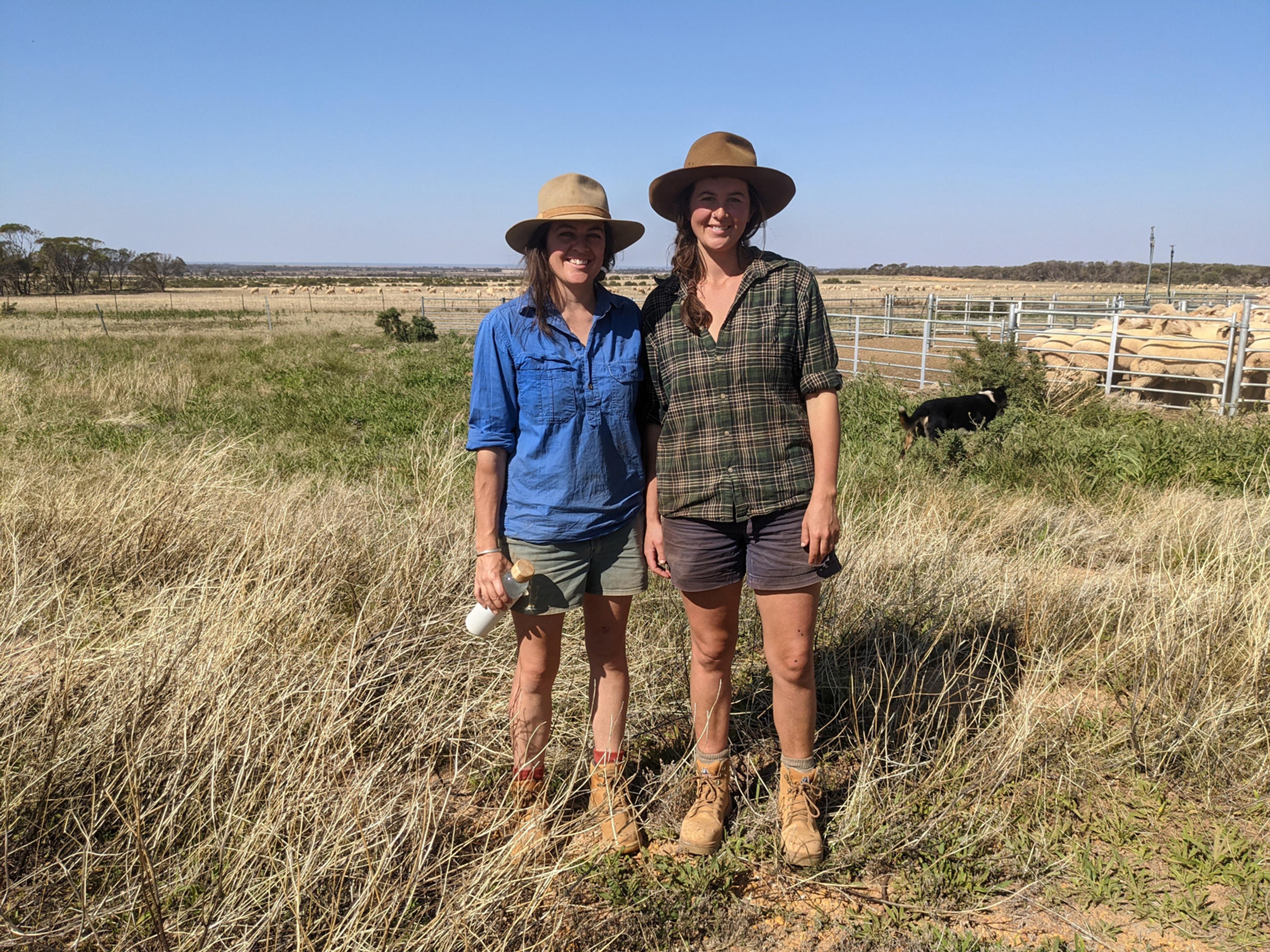Kristy Stewart on Enabling The Next Generation of Leadership
Kristy Stewart lives with her family at Yan Yan Gurt West Farm, a multi-generational working example of regeneration in the Otways, South-East Australia. Running around 1300 breeding ewes, the farm produces between 1500-1800 prime lambs per year – but it’s no downtrodden dust bowl.
Yan Yan Gurt’s landscape is woven with vegetation tapestries and wildlife corridors designed to harmoniously integrate livestock and land. It’s a place where everything has a function, a design purpose, something to give back. Trees complement prime lamb production by providing shade, shelter, integrated pest management, wildlife habitat and countless subtle services that support the wider ecology.
With regeneration and repair at the forefront of the Stewart family’s minds, over the last 30 years, they’ve used agroforestry – a broad term for land use practices that integrate pasture or crop production with trees and shrubs – to take the landscape from 3% to 18% woody vegetation. In real terms, their farm is carbon neutral.
Mutual connections and a shared interest in forestry first brought Kristy Stewart and me together. It became obvious we were both deeply committed to exploring what it means to be in the decade of regeneration. As the daughter of Andrew Stewart, co-founder of the Otway Agroforestry Network, Kristy had a firm grasp of what it all involved.
When we spoke more recently, Kristy was away from the family farm for several months touring the Kimberleys in the northwest of Australia. Sitting in her dust-soaked red pindan dirt car having been out on Country assisting friends with a cultural camp, Kristy spoke with an infectious passion and a verve for life. Her family has been dedicated to the regeneration of ecosystems surrounding and within Yan Yan Gurt West for decades and she has been on a mission to understand how she herself can connect and care for our country.
The 575-acre Yan Yan Gurt West farm is an active example of what a diverse and resilient community of land managers can accomplish. Having seen what her father and mother achieved in repair and regeneration over 30 years, Kristy has committed to continue stewarding the land with her family into the future.
As farmers are navigating volatile economic markets and ecological climates, the industry is looking for guidance, support and an open ear. Over the years Kristy has openly discussed her exploration of what is needed to progress the industry towards a state of greater regeneration and a common theme kept arising, leadership. I asked Kristy what the future of leadership looked like for her in a time of regeneration.
What is a leader?
A leader has the power to inspire people, create positive change, and transform the communities they belong to. In the agroecological space, we are in the grip of complex challenges – shifting climates, growing supply chain demands, evolving markets, ageing stewardship demographics, ecologically strained soils and increased climate extremes. Strong, holistic and mindful leadership is crucial to navigating paths to a better future.
Being able to hold space as a leader requires an ability to not only listen to respond but listen to understand. Kristy embodies this practice with one foot standing firmly on the family farm and the other as an officer in the Upper Barwon Landcare Network.
Constantly learning from her relationships built in community, time working with those on Country and back home on the farm, Kristy is attempting to navigate the multifaceted complexities that lie behind success in leadership.
Leaning into Leadership
Kristy attributes her experiences connecting and learning from First Nations people on Country as pivotal to her journey of regeneration. They exposed her to immersive models of leadership that prioritise Country, community and culture. This included relational ways of thinking, teaching and leading that embrace a greater collaborative approach and facilitating spaces where a diverse range of opinions were encouraged.
For Kristy, it’s about “How do we harness the wisdom that lies not just within those you find yourself physically surrounded by, but that which is held within the greater community, and do it in a way that adopts a holistic approach, and encourages vulnerability and engagement?” In doing so, “How do we hold spaces and facilitate this relationship and transaction of wisdom between others, bringing this into community, and developing a deeper and more meaningful relationship with the landscape?”
We discussed ideas and processes that would allow these envisioned spaces to become the norm. Kristy spoke of a profound admiration of First Nations people’s cultures and healing processes. The interwoven aspect of self and land in many First Nations cultures is a way of being that Western culture struggles to understand. She is cautious of a future where we are unable to comprehend and embody this deep ecological literacy and relationship with the natural world at a personal level.
Additionally, the challenge of not embracing alternate approaches to leadership presents the risk of siloing thoughts and experiences in the industry and could impact how communities come together. This is not to say that the traditional set-up of knowledge exchange and sharing experience learnt from a lifetime in the field is not valuable, but instead acknowledging that there are a diversity of ways to engage the wisdom and knowledge from those in the industry. Looking forward, Kristy believes we need more women and First Nations people in our conversations and the regeneration space if we are going to in order to heal our communities and societal disconnections to nature.
Leading for the Future
As someone who has been raised in a period where ecological, social and political stress has become more prevalent in the agriculture industry, Kristy is an example of the emerging generation of stewards that can see the evolving demands of our future leadership. Deep in the midst of her own learning journey, Kristy openly admits that her knowledge and perspective of what it means to be in connection with Country, community and industry is constantly shifting. This emergent approach is a reflection of exactly what regeneration is and the qualities we need in the future of our leadership in agriculture. When there is so much yet to be understood, we need leaders who can ensure that curiosity and openness sit at the heart of our conversations at every dinner table across Australia.
Connect Further
If you’re interested in connecting with Kristy you can follow her on Instagram and if you’re curious about Yan Yan Gurt West Farm, you can find a video from the Bob Hawke Finalists here.
This story was written on the unceded lands of the Wurundjeri people, part of the Kulin Nation.

